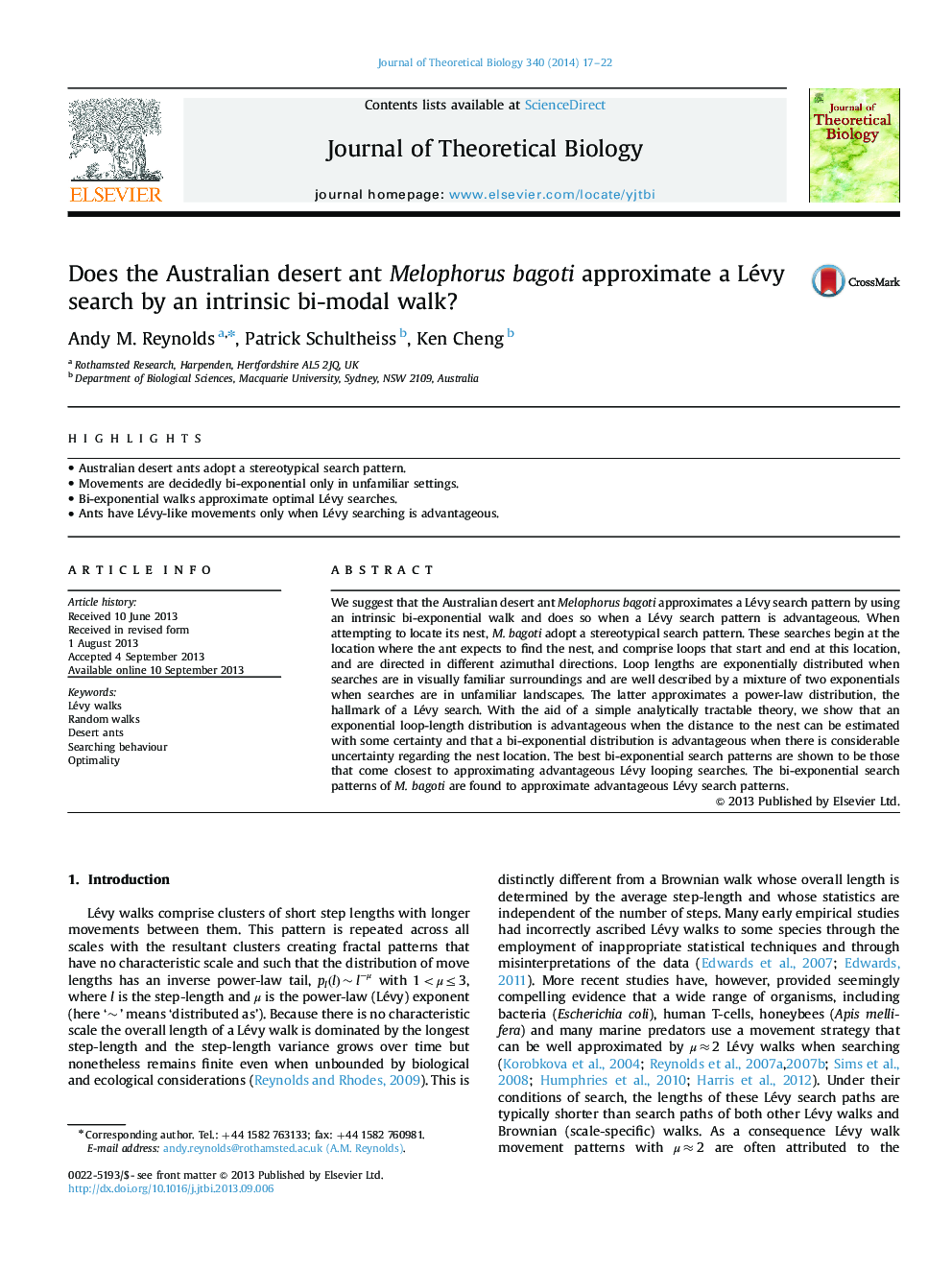| کد مقاله | کد نشریه | سال انتشار | مقاله انگلیسی | نسخه تمام متن |
|---|---|---|---|---|
| 4496223 | 1623870 | 2014 | 6 صفحه PDF | دانلود رایگان |

• Australian desert ants adopt a stereotypical search pattern.
• Movements are decidedly bi-exponential only in unfamiliar settings.
• Bi-exponential walks approximate optimal Lévy searches.
• Ants have Lévy-like movements only when Lévy searching is advantageous.
We suggest that the Australian desert ant Melophorus bagoti approximates a Lévy search pattern by using an intrinsic bi-exponential walk and does so when a Lévy search pattern is advantageous. When attempting to locate its nest, M. bagoti adopt a stereotypical search pattern. These searches begin at the location where the ant expects to find the nest, and comprise loops that start and end at this location, and are directed in different azimuthal directions. Loop lengths are exponentially distributed when searches are in visually familiar surroundings and are well described by a mixture of two exponentials when searches are in unfamiliar landscapes. The latter approximates a power-law distribution, the hallmark of a Lévy search. With the aid of a simple analytically tractable theory, we show that an exponential loop-length distribution is advantageous when the distance to the nest can be estimated with some certainty and that a bi-exponential distribution is advantageous when there is considerable uncertainty regarding the nest location. The best bi-exponential search patterns are shown to be those that come closest to approximating advantageous Lévy looping searches. The bi-exponential search patterns of M. bagoti are found to approximate advantageous Lévy search patterns.
Journal: Journal of Theoretical Biology - Volume 340, 7 January 2014, Pages 17–22